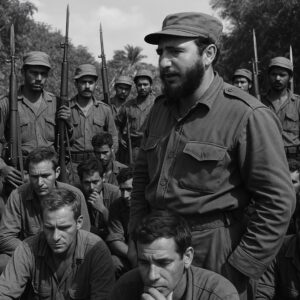In the early morning hours of April 17, 1961, a covert U.S.-backed mission unfolded on the southern shores of Cuba. Known as the Bay of Pigs invasion, the operation aimed to overthrow Fidel Castro, the country’s communist leader. The plan, orchestrated by the CIA, relied on a force of Cuban exiles trained and armed by the United States. However, what was meant to be a swift and decisive strike turned into a humiliating defeat, exposing the fragility of U.S. Cold War strategies and solidifying Castro’s grip on power.
The invasion was based on the belief that once the exiles landed, Cubans would rise against Castro. Instead, the attackers were met with fierce resistance. Poor intelligence, logistical failures, and a lack of U.S. military support left the invaders outnumbered and outgunned. Within three days, Cuban forces had crushed the assault, capturing or killing most of the invading troops. The defeat was an international embarrassment for the United States and a personal blow to President John F. Kennedy, who had reluctantly approved the plan but refused to provide direct military intervention.
The failure of the Bay of Pigs invasion had lasting consequences. It strengthened Castro’s position in Cuba, pushing him closer to the Soviet Union and setting the stage for the Cuban Missile Crisis the following year. The debacle also damaged U.S. credibility in Latin America, fueling anti-American sentiment. In the years that followed, the CIA continued to attempt covert operations against Castro, but none succeeded in toppling his regime.
Despite its failure, the Bay of Pigs invasion remains a pivotal moment in Cold War history. It serves as a cautionary tale about the dangers of underestimating an enemy and the risks of covert military interventions. More than six decades later, the event is still studied as an example of how miscalculations and flawed assumptions can lead to disastrous consequences on the world stage.

